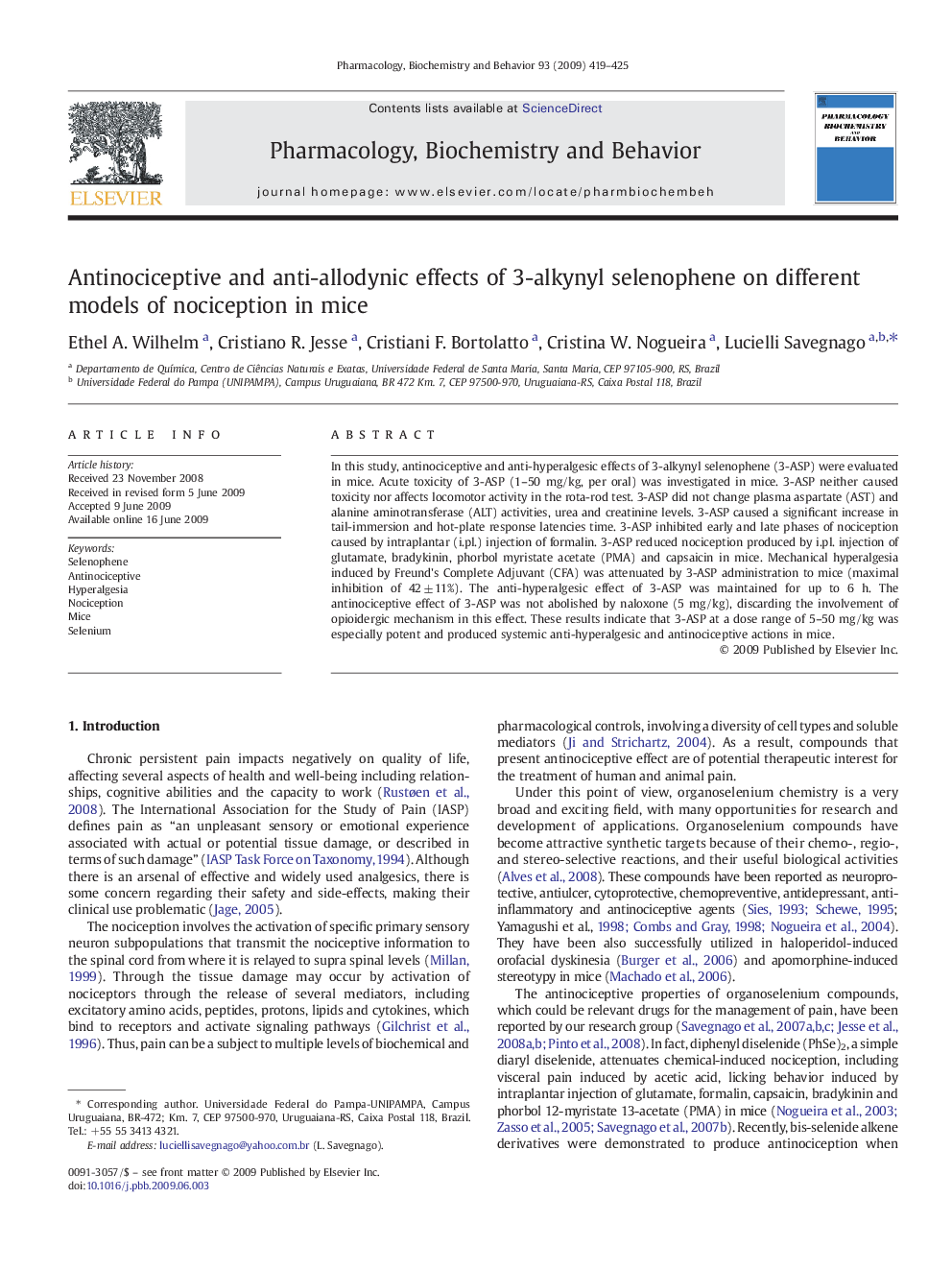| Article ID | Journal | Published Year | Pages | File Type |
|---|---|---|---|---|
| 2013567 | Pharmacology Biochemistry and Behavior | 2009 | 7 Pages |
In this study, antinociceptive and anti-hyperalgesic effects of 3-alkynyl selenophene (3-ASP) were evaluated in mice. Acute toxicity of 3-ASP (1–50 mg/kg, per oral) was investigated in mice. 3-ASP neither caused toxicity nor affects locomotor activity in the rota-rod test. 3-ASP did not change plasma aspartate (AST) and alanine aminotransferase (ALT) activities, urea and creatinine levels. 3-ASP caused a significant increase in tail-immersion and hot-plate response latencies time. 3-ASP inhibited early and late phases of nociception caused by intraplantar (i.pl.) injection of formalin. 3-ASP reduced nociception produced by i.pl. injection of glutamate, bradykinin, phorbol myristate acetate (PMA) and capsaicin in mice. Mechanical hyperalgesia induced by Freund's Complete Adjuvant (CFA) was attenuated by 3-ASP administration to mice (maximal inhibition of 42 ± 11%). The anti-hyperalgesic effect of 3-ASP was maintained for up to 6 h. The antinociceptive effect of 3-ASP was not abolished by naloxone (5 mg/kg), discarding the involvement of opioidergic mechanism in this effect. These results indicate that 3-ASP at a dose range of 5–50 mg/kg was especially potent and produced systemic anti-hyperalgesic and antinociceptive actions in mice.
